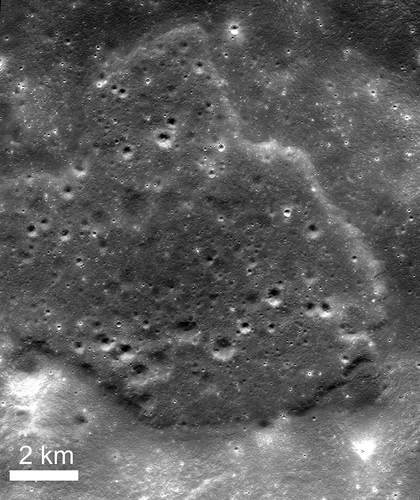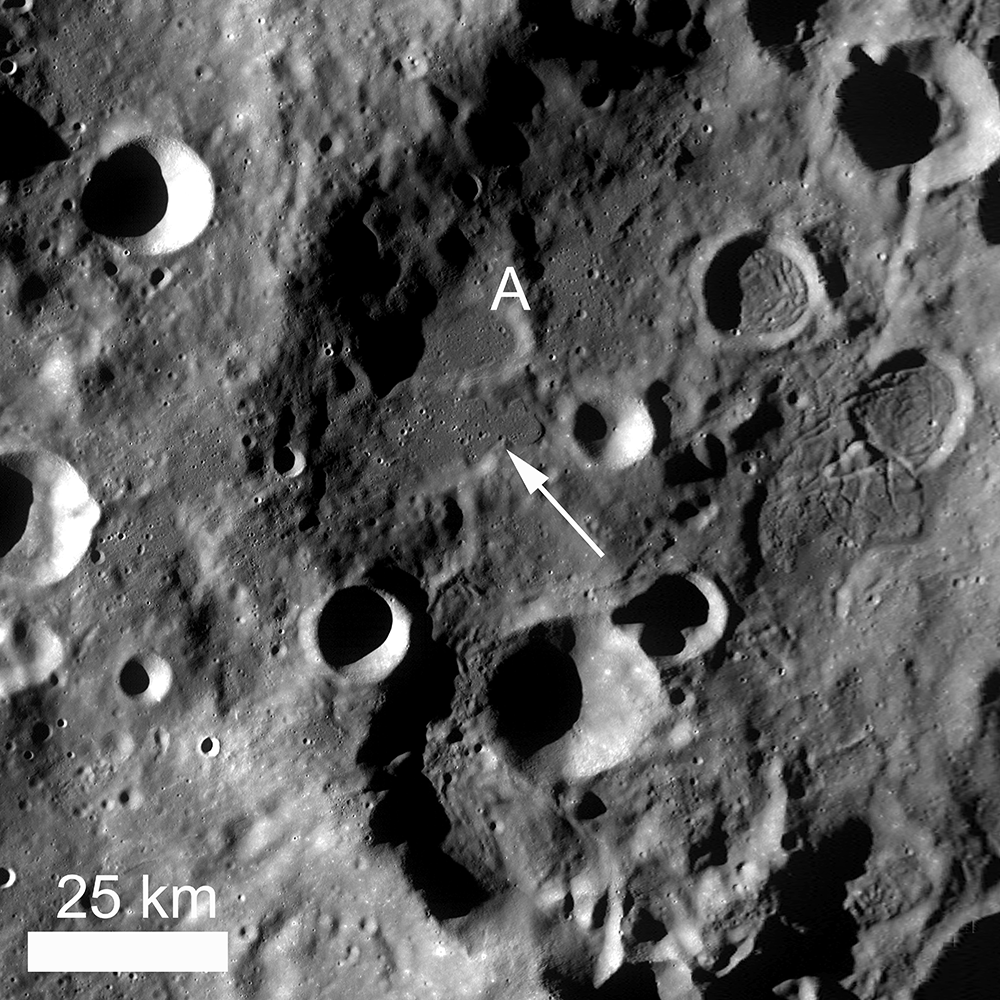The LRO mission support group has published an image of a remarkable section of the lunar surface. The impact melt is imprinted on it.

Comets and asteroids usually crash into the Moon at speeds exceeding 12 km/s. During such events, a huge amount of energy is released. It is converted into heat, which, as a rule, completely evaporates the impactor, and also melts rocks at the impact site.
The impact melt formed during such events sprays up the sides of the crater (as well as from the crater), and then cascades down to the bottom, covering it and flowing into the depressions. Figuratively, it can be compared to instantaneous lava. The impact melt creates flows that resemble lava flows on Earth. They consist of the same type of material — molten silicate rock.
The LRO image shows an example of such a melt. It covers the northwestern part of the bottom of an unnamed 105-kilometer crater on the far side of the Moon (it is located on the northeastern edge of the giant South Pole-Aitken impact basin). The frozen melt has a width of 2 to 8 kilometers and can be traced at a distance of about 18 km from the crater side. In the blade-like part of the stream, the sediment thickness exceeds 50 meters.

Judging by the condition of the surface, the stream photographed by LRO has an ancient age. At the same time, most of the main impact formation is noticeably eroded and covered with a large number of smaller craters, while the melt appears relatively intact. In this regard, planetary scientists suspect that it may not be associated specifically with this crater. Perhaps its source is the Apollo impact basin located 450 km to the northwest or the Mare Orientale located 750 km to the northeast.
You can also read about the discovery of “solar water” on the Moon.
Follow us on Twitter to get the most interesting space news in time
https://twitter.com/ust_magazine

